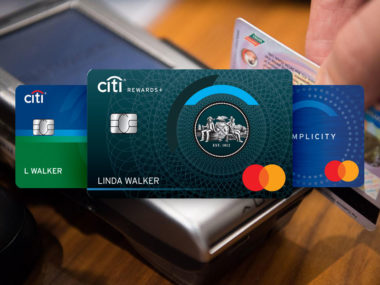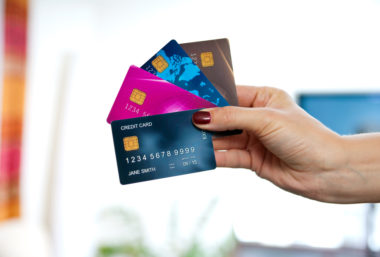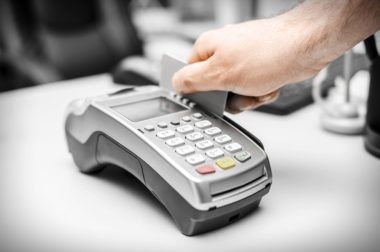When you swipe your credit card at a store, where does the money go? This isn’t a riddle. When you make a purchase with your credit card, you begin the transaction process, but it doesn’t stop there.
Credit transactions take complex, behind-the-scenes actions in order to withdraw funds from your account and transfer them to merchants. It’s important to know a little bit about this process to successfully track your purchases and budget your finances.
Table of Contents
What Is a Pending Transaction?
A pending transaction occurs when you use your credit card for a purchase but the funds haven’t quite transferred over yet. Below are some common examples of when pending transactions occur:
- Large purchases: When you make a large purchase on credit, merchants are taking on risk. Sometimes your payment will be listed as a pending transaction as a result;
- Tipping at a restaurant: Oftentimes restaurant workers wait till the end of the night to enter in the tips that they received during their shift and your transaction will remain “pending” until the tips are entered in;
- Payments made outside of business hours: Sometimes, transactions show as pending because the purchase or payment was made outside of traditional business hours (9 to 5), and the transaction will clear the following day;
- Merchant protocol: Some merchant organizations do not accept payment until an order is shipped. For example, Amazon purchases will remain “pending” until they ship out your order. Once the order has been shipped out, then your card will actually be charged.
Pending Transactions vs. Posted Transactions
There are pending transactions and posted transactions. The primary difference between the two terms is that a pending transaction eventually turns into a posted transaction. A posted transaction is a completed payment that has been cleared — similar to the process for a check getting cleared.
Let’s say you make a payment of $100 on your credit card. You assume since you purchased something, and there is a receipt, that the transaction is fully completed — this is not always the case.
The $100 charge is currently a pending transaction, but once the funds are charged to your credit card account and the payment recipient receives the funds, then a pending transaction becomes a posted transaction.
Pending transactions generally show as the same amount your purchase was, but in some cases, they can appear as random $1 charges.
$1 Charges on Your Credit Card
Have you noticed a random charge on your statement? It usually shows up mixed in your pending transactions. These charges could result from a merchant verifying funds for purchased goods, or it could be credit card fraud.
Usually, these $1 charges are nothing to worry about. They come from gas stations, hotels, and rental car companies. They are used as temporary preauthorization from your credit card company. The $1 charge keeps merchants from having to place a larger hold against your account.
The charge will disappear when the final amount of your transaction is no longer pending. The dollar is never taken from your account. However, if these random $1 charges don’t disappear or start popping up on your final credit card statement, contact your card issuer immediately and find out what’s going on.
Do Pending Transactions Affect Your Balance?
This can be confusing because pending transactions do count against your available credit, but they are not counted as part of your outstanding balance. To elaborate, even if you had no approved charges on your monthly statement and you have a balance of $0, a pending charge of $100 would still count against your credit limit.
Depending on your credit card’s terms and conditions, you may not always be able to pay pending charges when you pay off your credit card balance. Since they are pending (and the final amounts may change), making a payment to cover pending charges is a pre-payment. Again, the pending charge doesn’t factor into your balance, so it isn’t actually a debt yet.
How Long Do Pending Transactions Take?
When you have a pending transaction because the merchant or retailer hasn’t completed their transactions yet, it could take up to five days to clear.
If you simply made a payment or purchase outside of standard working hours, the pending transaction will generally only last till the next day. If your purchase or payment requires pre-authorization, the pending transaction period will typically only last 24 hours.
There are certain things you should keep in mind about pending transactions. While pending transactions usually reflect a purchase, making a credit card payment outside of standard working hours on the day your bill is due will result in a pending transaction that won’t clear until the following day.
This could result in a late payment penalty if your payment is held up due to a pending transaction, so it’s best to pay your bill as early as possible.
Dispute Pending Charges
If a pending transaction or a random $1 charge shows up on your account statement, but you know it wasn’t a purchase you made, you might need to dispute the charge. Follow these steps to dispute a credit card charge:
- Notify your bank or card issuer as soon as you notice an unauthorized charge;
- If there’s a simple mistake, like an incorrect amount, contact the merchant and ask them to fix it;
- File a formal complaint with your bank and a police report if the transaction is fraudulent;
- Keep checking in with your bank or card issuer on the status of your dispute.
You will be notified that your dispute was either denied or approved. If the dispute is approved, the charge will be reversed or refunded to your card and no interest will be charged on that purchase. If denied, you will receive an explanation letter.
Image Source:https://depositphotos.com/






